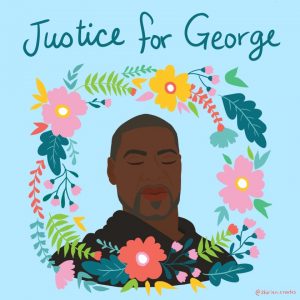
 I am marveling at how much things can change in a week. Just over a week ago, I was preparing to write this note about celebrating PRIDE month in the midst of a pandemic and honoring fathers and father figures for Father’s Day. Both things are still featured in our newsletter this month and are absolutely worthy of attention. However, our Twin Cities community and the nation as a whole is once again grappling with the horror of police brutality and violence against black and brown people, revealing once again the legacy of racism, discrimination, and systemic oppression that has robbed black and brown communities of human rights, physical and emotional safety, education, health, and social, economic, and political power and capital for centuries.
I am marveling at how much things can change in a week. Just over a week ago, I was preparing to write this note about celebrating PRIDE month in the midst of a pandemic and honoring fathers and father figures for Father’s Day. Both things are still featured in our newsletter this month and are absolutely worthy of attention. However, our Twin Cities community and the nation as a whole is once again grappling with the horror of police brutality and violence against black and brown people, revealing once again the legacy of racism, discrimination, and systemic oppression that has robbed black and brown communities of human rights, physical and emotional safety, education, health, and social, economic, and political power and capital for centuries.
I live three blocks away from where George Floyd was murdered, and like so many of us, I spent the first part of last week feeling despair, anger, hopelessness, and helplessness. Why does this keep happening? Why have we not learned how to be better as a society? I struggled to consider what my part should be in responding to this violence that happened practically in my backyard. And in the past few days, I’ve had several reflections and learnings that I’d like to share with you.
This is where I got stuck in hopelessness and helplessness. But then I realized that the one thing I CAN do to make a difference for the future is to talk to my own children about race, racism, and discrimination. And to share resources with you on how to do the same.
This is what AMAZEworks and Anti-Bias Education are all about. Research shows that having as few as five explicit conversations about race and other differences lower bias levels in children. Discussing race and racism with children from a very young age in age-appropriate ways helps us do our own internal work to reflect on and dismantle the daily ways we perpetuate white supremacy. It teaches our children that they have a role to play in perpetuating a racist society as well as agency in dismantling it. And it gives them tools to hold us as adults accountable when we do or say things that perpetuate racism, ensuring that we continue to do our own work.
So when the chaos dies down and the protesting subsides, the work must continue, and we each have to do our part. In the past week, many of us have stood up against the injustice of George Floyd’s killing and racial oppression, and we can’t just sit back down again. We must imagine there is a needle in a pincushion on our seats so that every time we try to sit down, we jump right back up and continue the hard work.
Keep asking yourselves – how am I regularly engaging in tough conversations about race, racism, and racial violence and oppression with myself, others, and the children I love? To that end, we have put together some FREE resources to help caregivers navigate difficult conversations with their children on race, racism, and discrimination. You can download the lessons from our website and purchase the set of corresponding books from our new web store, if you don’t have them already.
At AMAZEworks, we talk often that change happens from the edge of the inside. It’s a long game that can start with one conversation at a time. Together, let’s keep pushing against that edge and remember that it starts with ourselves first.
Image credit: Freelance designer Shirien Damra’s tribute to George Floyd has more than 3.4 million likes on Instagram. (Shirien Damra)